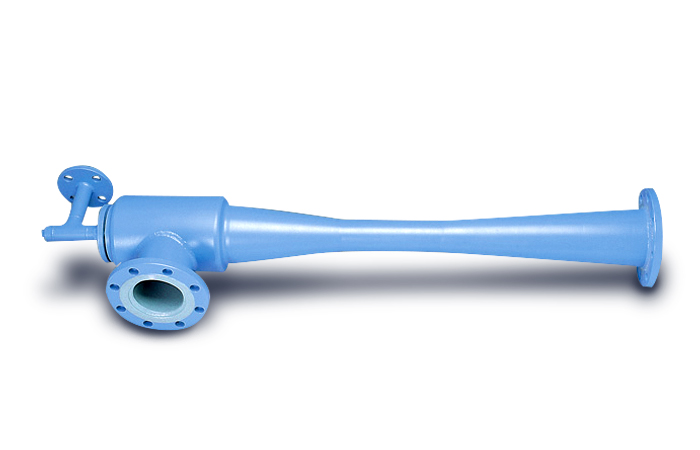

The primary nozzle loss coefficient, Ks float, optional The density of the secondary fluid (drawn from the vacuum chamber), The density of the primary (motive) fluid, rhos float Values, but every combination of two missing variables are supported. Both barometric condensers and shell-and-tube surface condensers are used for this purpose.There is no guarantee a solution will be found for the provided variable Condensing of motive steam greatly improves the efficiency of the set of ejectors. Similar devices called aspirators based on the same operating principle are used in laboratories.įor suction pressure below 100 mbar absolute (1.5 psia), more than one steam-driven ejector will be used in series, usually with steam condensers between the ejector stages. The construction industry uses them for pumping turbid water and slurries.For the bulk handling of food grains and other granular or powdered materials.For use in producing a vacuum pressure in steam jet cooling systems.In fossil fuel power plantss, they are used for the removal of the boiler bottom ash, the removal of fly ash from the hoppers of the electrostatic precipitators used to remove that ash from the boiler flue gas, and for creating a vacuum pressure in steam turbine exhaust condensers.In large, high-pressure modern boilers, usage of injectors for chemical dosing is not possible due to their limited outlet pressures. To inject chemicals into the boiler drums of small, stationary, low pressure boilers.The use of injectors (or ejectors) in various industrial applications has become quite common due to their relative simplicity and adaptability. Steam locomotives dominated rail transport from the mid-19th century until the mid-20th century, after which they were superseded by diesel and electric locomotives. The injectors were simple and reliable, and they were thermally efficient. There was at least one check valve between the exit of the injector and the boiler to prevent back flow, and usually a valve to prevent air being sucked in at the overflow.Īfter some initial skepticism, the injector was widely adopted as an alternative to mechanical pumps in steam-driven locomotives. An overflow was required for excess steam or water to discharge, especially during starting. The condensate mixture then entered a divergent delivery cone which slowed down the jet, and thus built up the pressure to above that of the boiler. Fresh water was entrained by the steam jet, and both steam and water entered a convergent combining cone which mixed them thoroughly so that the water condensed the steam.

The injector was originally used in the steam-generating boilers of steam locomotives for injecting or pumping the boiler feedwater to and from the boiler. Motive force was provided at the inlet by high-pressure steam. The injector was invented by a Frenchman, Henri Giffard, in 1858 and patented in the United Kingdom by Messrs. As the mixed fluid then expands in the divergent diffuser, the kinetic energy is converted back to pressure energy at the diffuser outlet in accordance with Bernoulli's principle.ĭepending on the specific application, an injector is commonly also called an eductor-jet pump, a water eductor, a vacuum ejector, a steam-jet ejector, or an aspirator.Ī- Steam from boiler, B- Needle valve, C- Needle valve handle, D- Steam and water combine, E- Water feed, F- Combining cone, G- Delivery nozzle and cone, H- delivery chamber and pipe, K- Check valve In essence, the pressure energy of the inlet motive fluid is converted to kinetic energy in the form of velocity head at the throat of the convergent-divergent nozzle. The low pressure draws the suction fluid into the convergent-divergent nozzle where it mixes with the motive fluid. Fluid under high pressure is converted into a high-velocity jet at the throat of the convergent-divergent nozzle which creates a low pressure at that point. The Venturi effect, a particular case of Bernoulli's equation, applies to the operation of this device. Water, air, steam, or any other fluid at high pressure provides the motive force at the inlet. It consists of a motive fluid inlet nozzle and a converging-diverging outlet nozzle. įigure 1 depicts a typical modern ejector or injector. The entrained suction fluid may be a gas, a liquid, a slurry, or a dust-laden gas stream. The motive fluid may be a liquid, steam or any other gas. For a steam-jet ejector, the motive fluid is steam.Īn injector, ejector, steam ejector or steam injector is a device that uses the Venturi effect of a converging-diverging nozzle to convert the pressure energy of a motive fluid to velocity energy which creates a low pressure zone that draws in and entrains a suction fluid and then recompresses the mixed fluids by converting velocity energy back into pressure energy.

Figure 1: Schematic diagram of a typical injector or ejector.


 0 kommentar(er)
0 kommentar(er)
